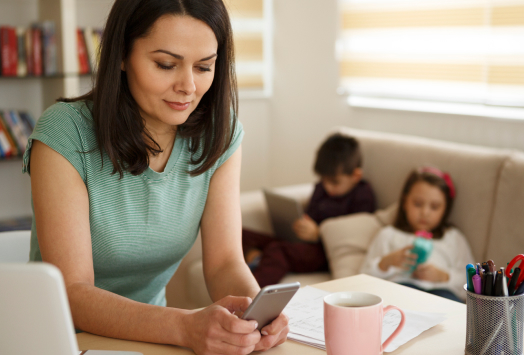You’re ready to create digital classes — but where do you start? We’ve gathered a few of our favorite video recording, broadcasting, and learning management systems that are totally free for Sawyer Providers.
We’ll walk you through Zoom, Facebook Live, and Google Hangouts and how to use each tool. We’ll also look at Google Classroom — a tool to manage students, assessments, projects and more!
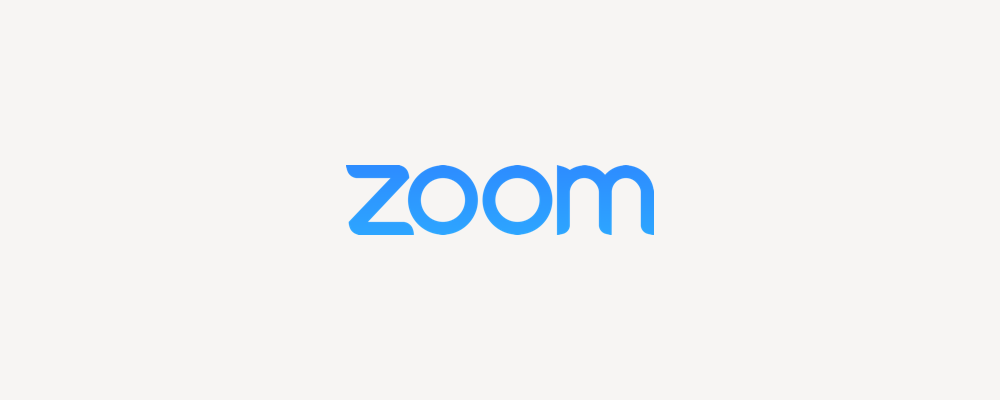
The Sawyer guide to Zoom
What is Zoom?
Zoom is a video communications company with a reliable cloud platform that supports video, audio, chat, and webinars.
Zoom is easy to use, join, and makes collaboration easy. It also works on any device — so you can meet students on-the-go, at home, and during the in-between moments.
Zoom pricing
Zoom pricing ranges — but small businesses can take advantage of the free version. The basic free account allows for unlimited 40-minute videos and meetings.
K-12 schools may be interested in reaching out to Zoom directly to take advantage of longer, free classes at this time.
What features does Zoom offer?
Zoom offers a variety of features to support educators whose students can call into an activity using a smartphone or laptop. You can also use Zoom to pre-record your content and share the final video with families.
Some highlights include:
- Chat
- Live video
- Screen share
- Make annotations during a screen share (think of this as an interactive whiteboard)
- Share computer audio, which is great if you’re playing a pre-recorded video!
- Free group calls up to 40 minutes long
How do educators create a free Zoom account?
- Navigate to Zoom
- Find the Sign Up, It’s Free button in the right hand corner of the screen
- Create an account using your work email, Google account, or Facebook
How can I use my free Zoom account to host a class?
If you want to host a class using Zoom, you’ll need to use a computer with a working camera and microphone. Once you have those items secured, you can teach a class.
Test creating a webinar following the steps below. Check out Zoom’s extensive documentation on how to use their video offerings.
How to create your first Zoom class
- Once your account is created, log-in and navigate to Your Account.
- Navigate to Meetings
- Click to Schedule a New Meeting
- Set a Meeting Topic — this should be the name of your class
- Add a Date and Time
- Set the Activity Duration
- Decide which Video and Audio settings you’d like to use
- Add any extra Meeting Options
- Save
- Invite your students
- Add the Join URL to your Activity Description in Sawyer Tools or
- Message a Roster to notify them of the meeting URL
How to record a Zoom class
Follow the steps above — but hold off on inviting guests.
Once you’re ready to start, you’ll navigate to the record button to save your session. Once you finish, Zoom will give you a link you can share with families.

The Sawyer guide to Facebook Live
What is Facebook Live?
Facebook Live is exactly what it sounds like — a live video stream created through Facebook. The feature uses a phone or computer to broadcast real-time video to Facebook. Users can broadcast from a business, group, or personal page.
If you want a broad audience to have access to your classes, Facebook Live is a great solution. Alternatively, you can use Facebook Groups to create a private community to share videos with.
Once a Facebook Live video finishes, it will automatically be saved and posted to your Facebook page for viewers who missed the event to reference.
Facebook Live pricing
Facebook Live is entirely free!
What features does Facebook Live offer?
Unlike Zoom, Facebook Live can be accessed by anyone who is connected to your Facebook page or group. This makes it great for content that you want to be accessible for your entire customer base — if you’re using an existing group make sure that your clients have joined your page or they won’t be able to access your content.
Some highlights include:
- Automatically save videos directly to your Facebook page
- Take live questions
- Emojis for audience reactions
How do educators use Facebook Live for free?
All you need is a Facebook account and a phone or computer to broadcast from.
How can I use my Facebook account to host a class?
If you don’t have a Facebook account, you will need to create one for your business. For the sake of limiting the content to your existing families only, consider making a private group for your enrolled customers.
Then:
- Log-in to your Business or Personal Facebook
- Navigate to a specific Facebook Group (if applicable)
If you’re using your phone:
- Download the Facebook App
- Tap the Camera Icon to the left of your Search Bar
- Give Facebook access to your microphone and camera
- Choose your privacy and posting settings
- Write a fun description telling your viewers more about your video
- Add your location (and consider linking to your activity on Sawyer Tools)!
- Set up your camera’s orientation
- Add lenses, filters, or drawings to your video.
- Click Start Live Video
If you’re using your computer:
- Go to your page and click into the “Write something” post
- Tap See All underneath post options
- Select Start a Live Video
- Write a fun description telling your viewers more about your video
- Give Facebook access to your microphone and camera
- Press Go Live
- Once you finish, the video will automatically save on your account and can be shared
Tip: You can practice the above functionality by setting your post audience to “Only Me”
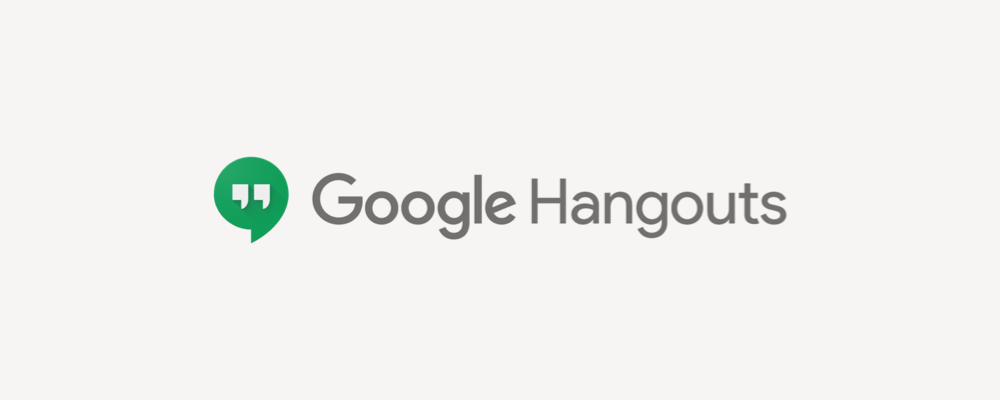
The Sawyer guide to Google Hangouts
What is Google Hangouts?
Google Hangouts is a video platform that allows users across the world to have conversations enriched with photos, emojis, and group calls for free.
Google Hangouts pricing
Google Hangouts are free for up to ten people, so they’re great options for smaller class sizes!
What features does Google Hangouts offer?
Most similar to Zoom, Google Hangouts allows you to join an activity using a smartphone or laptop. If you want to record a Google Hangout, you’ll need a premium subscription. For that reason, we recommend using Hangouts for live activities or lessons!
Some highlights include:
- Instant Messaging
- Voice Calls
- Video Calls
- Group Conferencing
- Built-in screen sharing
How do educators use Google Hangouts for free?
All you need is a Google account and a phone or computer to join from.
How to start a Google Hangouts class
Tip: bookmark this guide for future reference.
Test creating a hangout following the steps below.
- Log in to your Google account.
- Download the Hangouts App on your phone or tablet.
- Download the Hangouts Extension in the Chrome Store.
- Sign Into Hangouts
- Create a hangout link and share it with your customers by messaging your class
How to create group classes using Google Hangouts
If you don’t have a Google account, you will need to create one for your business. Then,
- Log in to your Google account.
- Go to Google Calendar and create an event.
- Share the unique Hangout URL with your customers
- Start the video and your activity

The Sawyer guide to Google Classroom
What is Google Classroom?
Google Classroom is a free application designed to help students and teachers communicate, collaborate, organize and manage assignments, go paperless, and so much more! Google Classroom is a Learning Management System (LMS). Educators should use Google Classroom in combination with a video service, since it does not support live video broadcast.
Google Classroom pricing
Google Classrooms is totally free for the time being.
What features does Google Classroom offer?
Google Classroom is a little different than some of the other services we’ve talked about! Since it’s designed for educators, you can create assignments and distribute them to students using Google Drive while Gmail is used to provide classroom communication.
Students under the age of 13 cannot create an email address with Gmail. For this reason, we recommend this option for programs with students 13 and older.
Some highlights include:
- Add students easily
- Manage multiple classrooms
- Teach with other instructors
- Add materials to assignments and classes
- Add worksheets to assignments
- Prepare announcements, questions, and assignments in advance
- Quick polling
- All-in-one resource collection
- Access anytime, from any device
- Share content
- Communicate with parents
How do educators access Google Classroom for free?
Depending on the type of Gmail account you use, you can log-in to Google Classroom in a few different ways.
School account
Also known as a G Suite for Education account, this account is set up by an accredited school - for example “name@yourschool.edu” If you don't know your G Suite for Education account details and you don’t work for a school, you might not be able to use this log-in.
Personal Google Account
This is set up by an individual and used as a personal Google Account outside of a school setting - for example “name@business.com”. This will most likely be how you and your clients access Google Classrooms.
G Suite account
This is set up by your organization’s admin. It looks like you@yourcompany.com. Unless you’re getting your instructors set up, most of your students won’t access the service this way.
Please note: If you use Google Classrooms to integrate with student email addresses, make sure that you adjust your terms and conditions to reflect this new type of communication.
How can I use my Google Classroom account to host a class?
As a teacher, one of the first things you'll do in Classroom is create a class for each of the classes you teach. Tip: bookmark this guide for future reference.
To start:
- Go to classroom.google.com.
- Click on the Classes page > Create a Class
- Enter the Class Name (this should correspond to your activity session in Sawyer)
- If you want to add more details, learn more in this article.
How to invite your students to Google Classroom
After you set up a class in Google Classroom, you will want to invite your students to the class. You can invite students from inside your class or you can give students a code with which they can log in to your class. If using a code, we recommend messaging your roster through Sawyer Tools.
- Log-in to your class
- Get the class code located in the bottom left-hand corner
- Tell your students to go to classroom.google.com
- Share these details via a roster message in Sawyer Tools
Additional resources
Video tools
- Skype — Educators can use this free web-based communication tool to video conference, make calls, and instant message.
Learning Management Systems
- Schoology — The basic package is free and great for facilitating online discussions, collaborating across classes, and more.
- Loom Pro — This tool is free for students and teachers. It allows for streamlines communication and project management.
Other resources
- Google Drawings — Collaborate on visuals at once! This would be great for a creative class that required group visual brainstorming.
- Skype in the Classroom — A free global community that fosters empathy and compassion for each other and our planet.
- Stoodle — This free tool allows users to join an online classroom by sharing a link. It’s a great tool for group work because users can work on the same virtual whiteboard at the same time through text chat and voice conferencing!
- Scholastic Learn At Home — Free day-by-day projects to keep kids reading, thinking, and growing curated by Scholastic editors and educators.
The Sawyer guide to online education
Check out our resources for educators creating digital classes.
- The top free services for creating online classes
- Tips for educators making the switch to virtual learning
- Frequently asked questions about online classes
- Using Sawyer Tools to bring community and content online
- Online class inspiration for every educator
- The Sawyer online class marketplace
Not currently a provider? Learn how Sawyer Tools can support your business.





















.png)


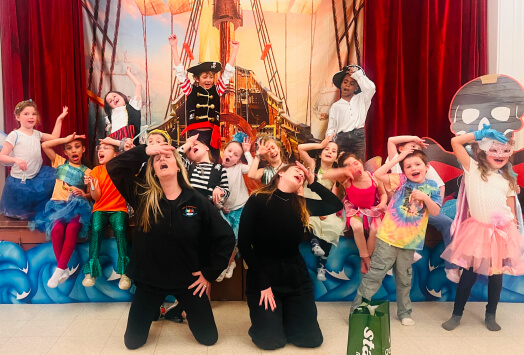

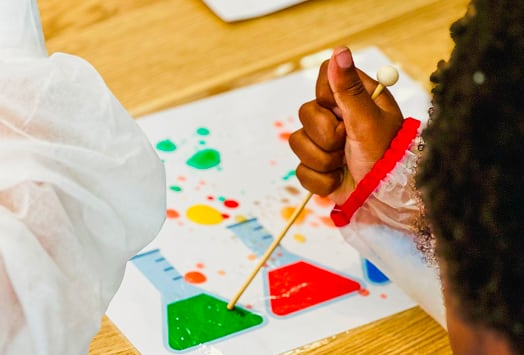








.avif)
.avif)


